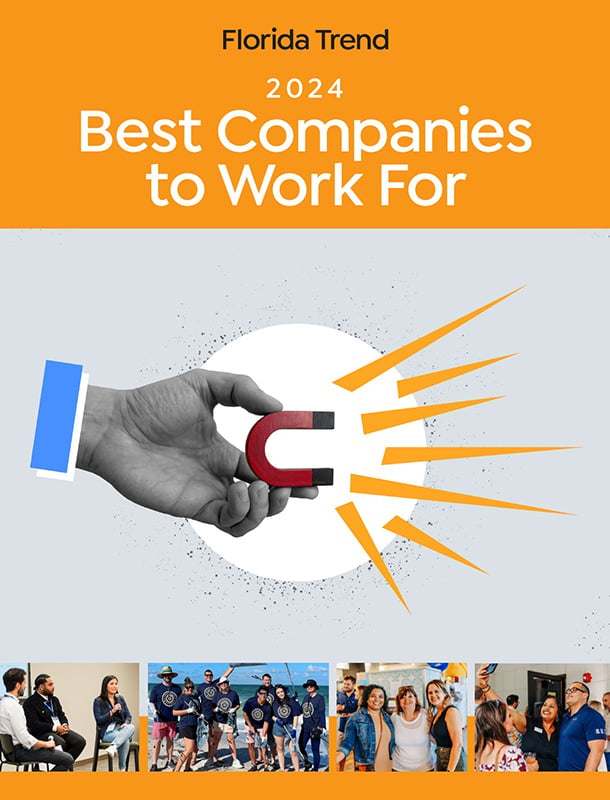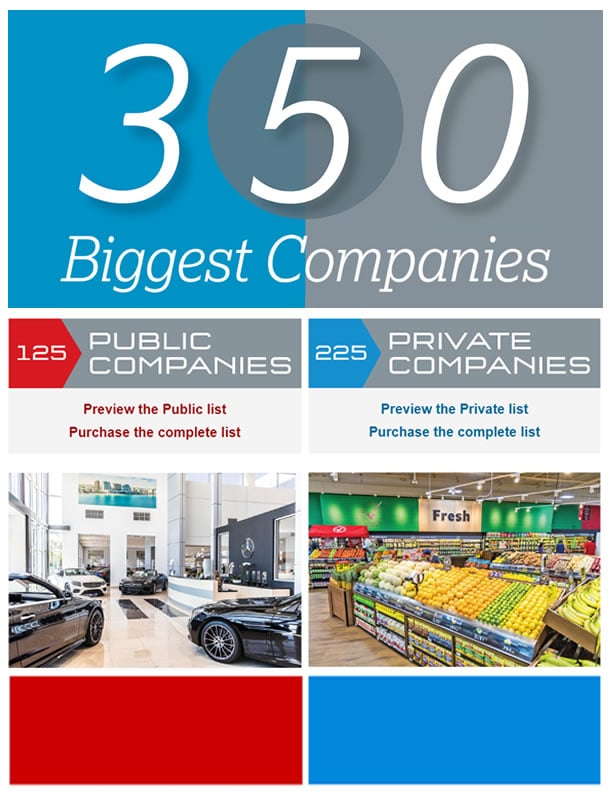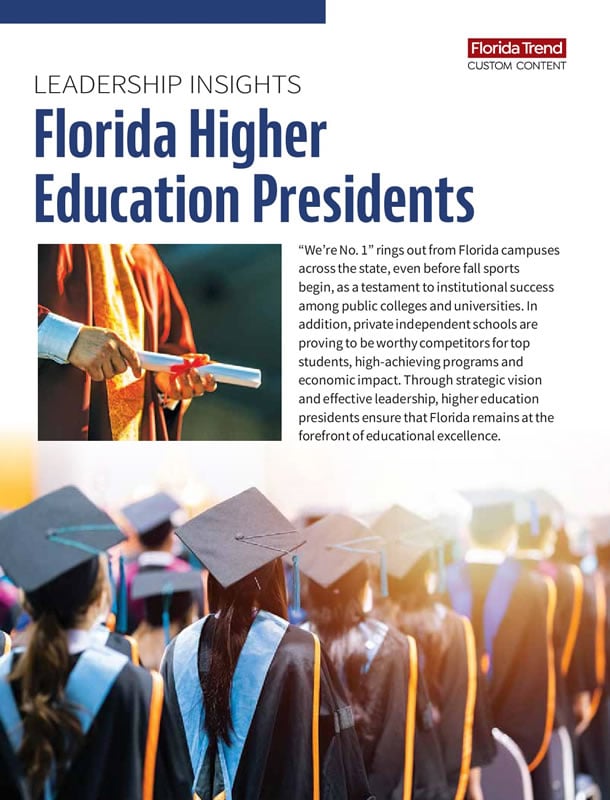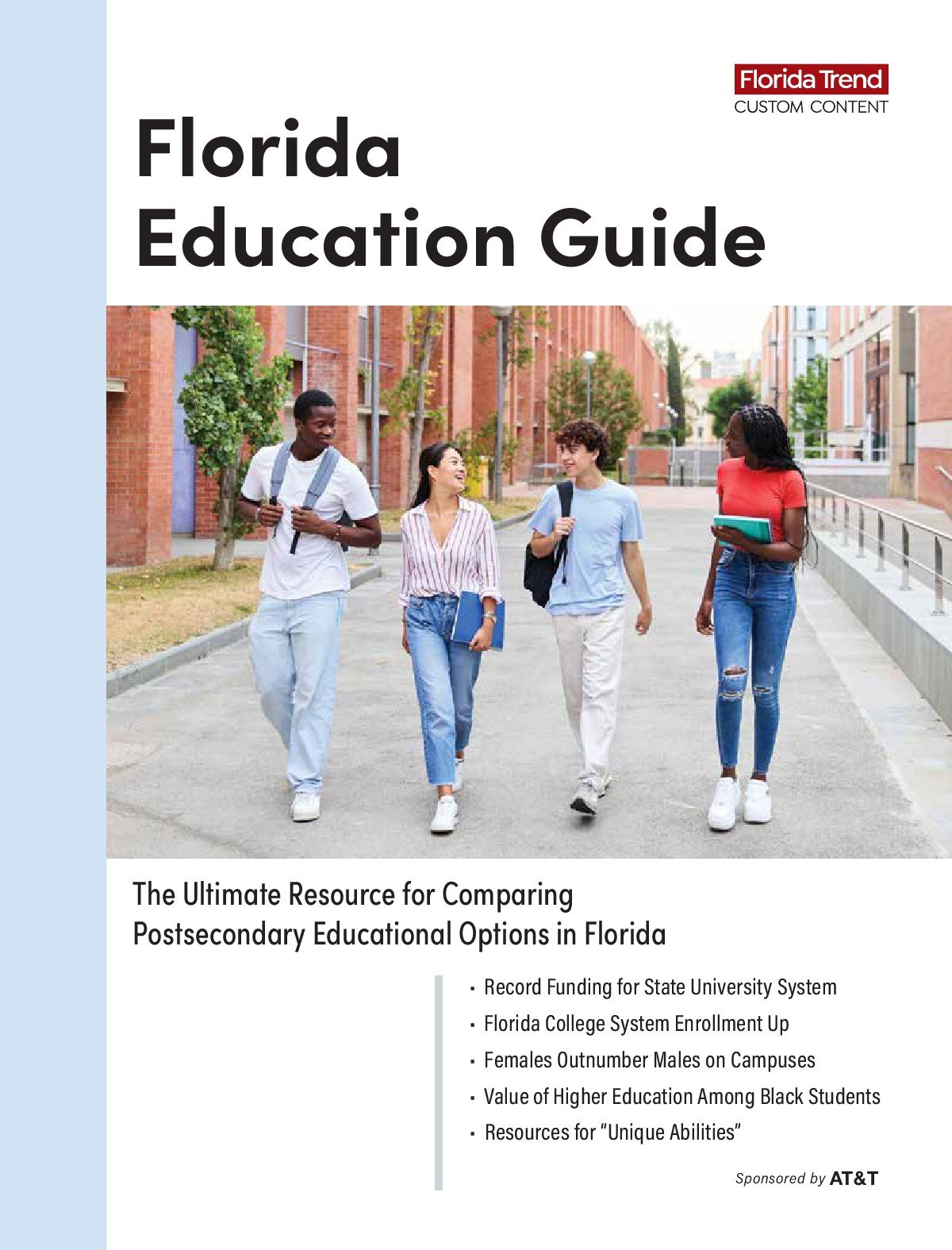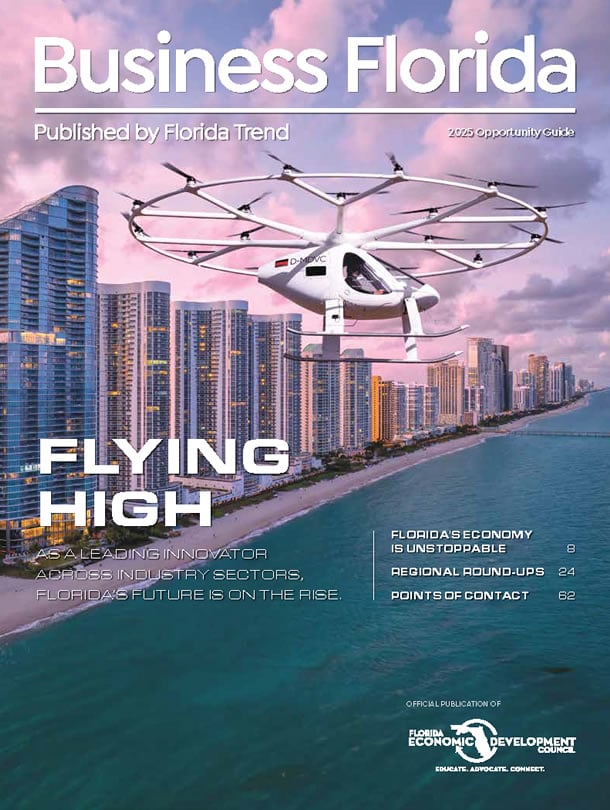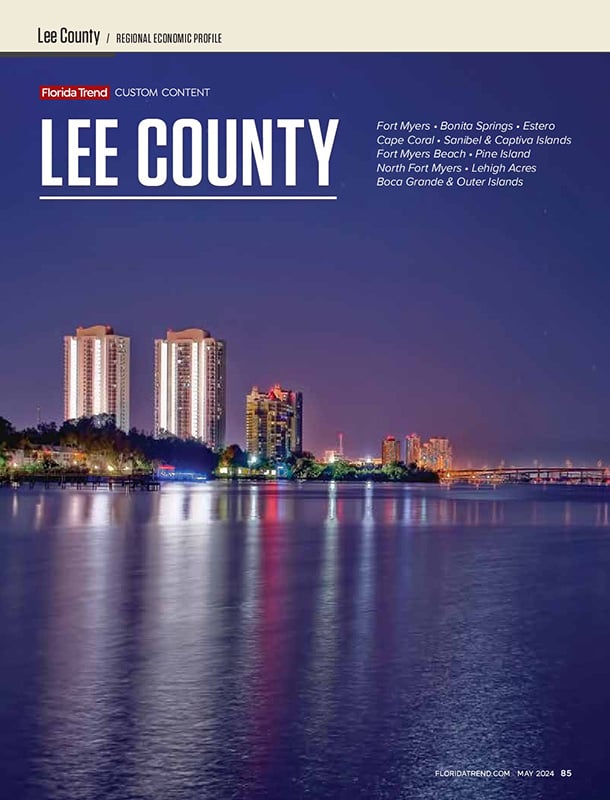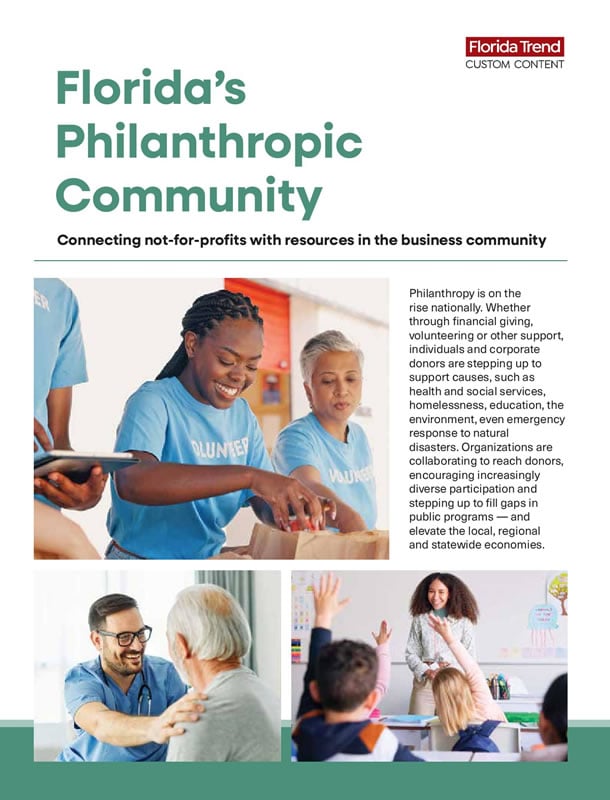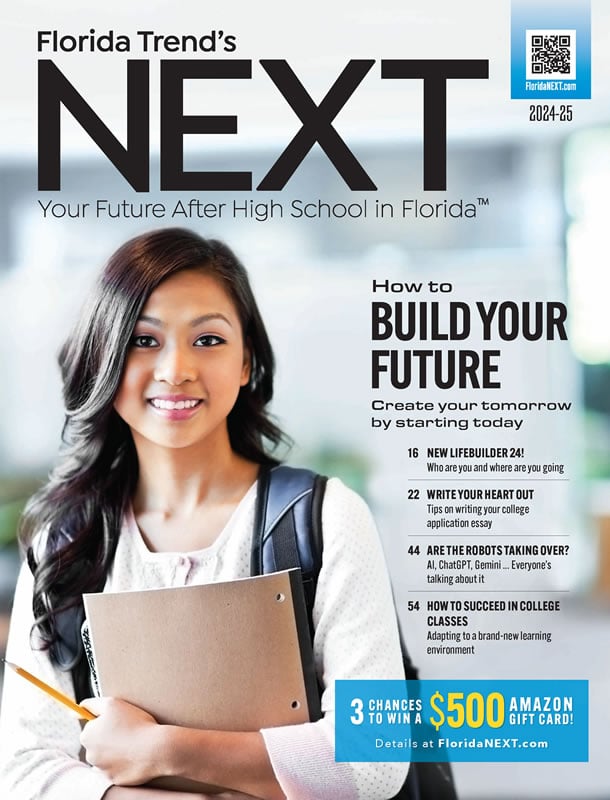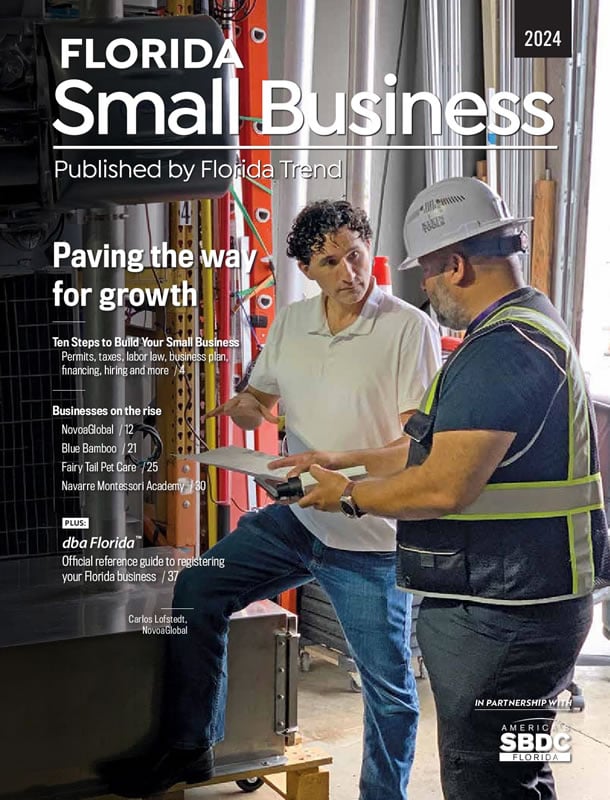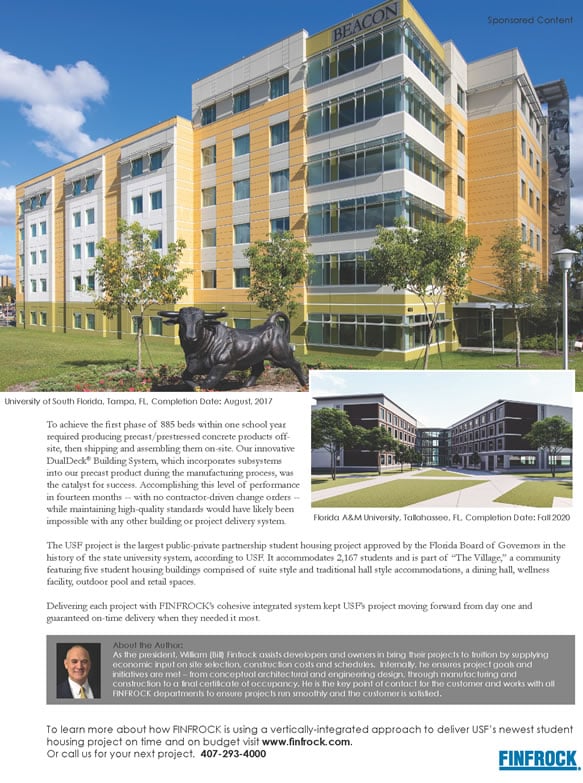Julian Johnston, a Miami real estate agent to the ultra high-end, annually handles $300 million to $400 million in listings. You could be forgiven for thinking that this year’s economic turmoil concerns buyers most. Johnston, instead, says it’s security and getting the kids admitted into private school. The Corcoran agent pauses to reconsider. “You can get security anywhere,” he says finally, “so it’s the schools. I’ve had clients not buying because they can’t get their kids in.”
Whether providing to rich or poor, these are unprecedented times in Florida for private education. In the 2022-23 academic year, a record 445,067 students, up nearly 29,000 from the prior year, attended private school. Florida also had a record 2,973 private schools, up 125 from the year before.
Credit the influx of families that began in the pandemic and credit Florida in 2023 going all-in on enabling families to use state vouchers to choose their child’s school regardless of their financial means.
The two drivers have been a boon to private schools at nearly every price point. In the Catholic Archdiocese of Miami, for example, 90% of children are on state vouchers, which cover nearly all the cost of elementary school and a third to half of high school tuition.
“We are blessed to have a state that truly prioritizes choice for families,” says Archdiocese School Superintendent Jim Rigg. Archdiocese schools added 1,000 students each of the last four years to take the three-county system to 37,000, its highest enrollment level in at least 15 years, Rigg says. The majority of Catholic schools in Florida have a waitlist in every grade, reports Mary Camp, the Florida Catholic Conference’s associate director for accreditation.
Faith-based schools serve a wide income demographic. Anecdotally, demand seems even stronger at schools catering to high-net-worth families where tuition can cost more than college. It’s a statewide phenomenon, though the impact appears greatest in Southeast Florida. Private schools there like Ransom Everglades, Gulliver Preparatory and Miami Country Day already were full before the advent of “Wall Street South” and moves by the likes of Goldman Sachs, BlackRock and Elliott Management to West Palm Beach or to Miami, where the most prominent relocation was billionaire Florida native Ken Griffin relocating his Citadel investment firm there. A Bloomberg headline: “Wall Street’s Move to Florida Crowds Elite Private Schools.”
In Broward, Douglas Laurie, president of 5,000-student American Heritage Schools, says the waitlist numbered an unheard of 600 heading into this 2025-26 school year. Perhaps 20 will make it off and into the school. Heritage, which has one campus in Plantation and another near Delray Beach in Palm Beach County, is the state’s top school and 12th nationally, according to ranking firm Niche.com. The school for 15 consecutive years has led Florida in production of National Merit Scholars, with approximately 9% of the state total last year. Its math competition team is the perennial powerhouse in national competions and the top Florida private school.
Next year’s (2026-27) waitlist, as of May, already numbered 230. “We have women who are pregnant who have put their unborn babies on the waitlist,” Laurie says.
Up the road in West Palm Beach at Oxbridge Academy, “we’re full,” says Ralph Maurer, head of school. Every grade has a waitlist. “There certainly is very high demand,” Maurer says.
PAIN POINTS AND POSITIVES
“The private schools just don’t have enough capacity,” says attorney Daniel Diaz Leyva, who chairs the real estate practice at law firm Day Pitney and works with schools on expansions. His family has run the admissions gauntlet itself with a sixth grader and an eighth grader at Miami’s Palmer Trinity, his alma mater. “These are growing pains that a city like Miami is experiencing. As painful as it is to a parent like myself going through this process, these are good problems to have, because it shows that the market’s growing. All the problems that we have are born out of the success that we’ve had as a state, attracting people to move here, and the environment that we live in.”
Johnston, the Corcoran real estate agent, tells of a Los Angeles-based family who stayed on the home-buying sidelines for two years waiting to see whether its offspring were admitted to Ransom Everglades in Coconut Grove, where he says 88 applicants vied for eight spots. “He’s going to spend $50 million depending on whether his kid gets in or not,” Johnston says. (Efforts to obtain an interview with Ransom officials were unsuccessful.)
Miami’s ever growing traffic congestion raises a new pain point in school selection. Earlier generations of parents had a choice of elite schools within a tolerable commute. Now, failing to be admitted to a nearby private might mean an hour and a half commute to the next closest.
At Oxbridge Academy in West Palm Beach, every grade has a waitlist. “We’re full,” says Head of School Ralph Maurer.
One thing relocating families don’t complain about is tuition. Florida’s most expensive private schools are $10,000 to $30,000 cheaper than New York’s top tier. American Heritage tuition tops out at $42,700, making it “one of the more expensive private schools,” Laurie says, but “a lot of people from New York and California look at our tuition and they say, ‘What’s the catch? This is so cheap.’ To them, it’s quite the bargain.”
When it comes to recruiting companies to relocate here, school availability does “come up in conversation, but it is not the deal breaker,” says Tatiana Silva, chief business development officer for the Miami-Dade Beacon Council economic development organization. What matters more, she says, are such factors as workforce availability, low taxes or Florida’s ease of doing business. Difficulty in getting into a school, she adds, is fairly common in places with a high density of wealthy people.
“Miami-Dade is incredibly well positioned from an educational system perspective,” Silva says. “We have more than 550 private schools. We have 86,000 students in charter schools. We have a public school system with award-winning magnet programs, dual-language tracks, STEM academies. For folks who are on the outside coming into Miami-Dade, they may just not know that those things are there.”
CLASS CEILING
The Business Development Board of Palm Beach County says it works with private schools to help relocating executives’ families. The organization’s CEO, Kelly Smallridge, says she expects more seats to become available as schools expand in the next couple years.
Some schools, however, have no interest in growing. In Northeast Florida, The Bolles School in Jacksonville last year numbered 1,785 students in grades pre-K through 12th, up from 1,635 in 2019-20, and it has “wait pools” of more wanting in. But beyond adding a couple dozen slots for boarders for 2026-27, it has no expansion plans. “We’re in a healthy place financially and from an enrollment perspective,” says Kila McCann, Bolles dean of enrollment and accessibility. She says the school guards what makes it special. “At what point does that get sacrificed because you decided to grow?” McCann says.
Others, however, want to grow. Miami attorney Javier Aviñó, land use practice head at law firm Bilzin Sumberg, sees “a lot of demand for expansion” and has worked with several Miami schools to get required zoning approvals.
However, traditional private school models don’t scale easily. Growing is a complex lesson in constraints — expensive land, heavy capital costs for facilities and operational costs to keep class sizes small.
Then there are regulatory hurdles. Zoning restrictions that public schools don’t have to face are a major barrier to new private schools in South Florida, according to a study of 35 southeast Florida cities and counties by law firm Greenspoon Marder for Teach Coalition, an advocacy organization for private school funding that represents 90% of Jewish day school and yeshivah students nationally. “Nearly all localities in South Florida heavily restrict where new schools can operate. Some have begun adding restrictions with the express intent of hobbling growth of nonpublic schools,” wrote the study authors, Teach Coalition’s Danny Aqua, special projects director, and Gabriel Aaronson, policy and research director.
The approval process can take 12 to more than 18 months and cost more than $150,000 in fees for professionals and traffic studies and the like. “Most schools simply can’t afford to wait this much time or spend this much extra money to get started,” Aqua and Aaronson said. They advocate for the Legislature to pre-empt local zoning rules to allow small, private schools in any business-zoned area and get the same “protections and flexibilities” as public schools.
“There is a phenomenal array of choices.” — Tatiana Silva, chief business development officer for the Miami-Dade Beacon Council
American Heritage’s Laurie says his school has had early talks with Palm Beach County government about expanding within its 40-acre suburban Delray campus. The Broward campus is at capacity. He would like to have a campus in south Miami-Dade and another in north Palm Beach County, but land thus far is too expensive. The school does own 57 acres in Mount Dora in Lake County in Central Florida, acquired for $3.98 million last year, but has no timetable to develop a school there.
“We’ve seen consistently strong interest from out-of-state families in recent years, with a notable surge beginning in March 2020 that has sustained above pre-pandemic levels.” — Melanie Connors, vice president of admission, Pine Crest School, Fort Lauderdale and Boca Raton
He sketches the expense to build new facilities while ensuring existing facilities and academics stay top notch. To get and keep quality teachers, the school bought apartments and houses in Coral Springs, roughly equidistant between the campuses, to provide some with below-market rate rent.
Laurie says the school strives to be a “good neighbor” when hospitals or economic developers call about a special recruit who wants a school for their children. His school joined a Business Development Board trip to New York in 2024 to introduce the school to families interested in moving to Southeast Florida. It’s done the same through the years in Europe, Asia and South America too for families interested in an American education.
Even with the lengthy waitlist, school representatives in May again went to New York to the Yale Club in Manhattan to meet with families. “These are people who are interested in migrating to South Florida and looking for a great private school,” Laurie says. “You always have to keep moving forward.”
Julian Johnston, the Corcoran real estate agent, tells of a Los Angeles-based family who stayed on the home-buying sidelines for two years waiting to see whether its offspring were admitted to Ransom Everglades in Coconut Grove, where 88 applicants vied for eight spots. “He’s going to spend $50 million depending on whether his kid gets in or not,” Johnston says.
Douglas Laurie, president of the 5,000-student American Heritage Schools in South Florida, says 600 kids were wait-listed heading into the 2025-26 school year. Twenty might make it off and end up enrolled at one of the school’s two campuses in Delray Beach or Plantation, pictured to the left.
Up, Down, Way Up:
In 1991, the 195,198 students in Florida private schools accounted for 9.3% of statewide enrollment. Private schools grew with the state and peaked in the early 2000s at 381,346. That number fell to 321,298 in the 2008-09 recession school year. Some 121 schools closed, and the share of Florida students enrolled in private schools went down to 11%. In the 2022-23 school year, the most recent available, it’s 13.4%, according to Florida Department of Education tracking.
Charter Numbers:
Charter schools are public schools. During the 2022-23 school year, the state had 726 public charter schools in 46 districts, according to the Florida Department of Education. Charter schools had 382,367 students during the 2022-23 year, compared to 229,428 students during the 2013-14 year.
Catholic Schools:
While Catholic school enrollment has plummeted 13.2% nationally over the past decade, it’s grown 12.1% in Florida over the same period. Statewide, the number of Catholic school students hit 93,431 in the last academic year, up nearly 14,000 from 2020. New schools opened from Key West to Ruskin in Tampa Bay to Niceville in the Panhandle.



